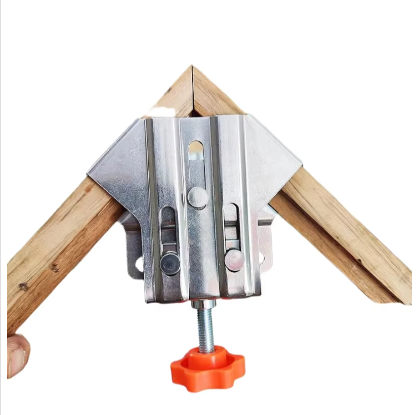Material Selection for Stainless Steel U-Bolts
Stainless Steel Grades: 304 vs 316
Picking out stainless steel U-bolts means knowing what sets grade 304 apart from grade 316. Most folks go with grade 304 because it stands up pretty well against rust and corrosion. That makes it good enough for things like building houses or putting up fences around yards. But wait! If those bolts are going to sit near salt water or where there's lots of chlorine floating around, then grade 316 becomes the smarter option. Why? Because manufacturers add something called molybdenum to the mix when making grade 316 steel. This little extra ingredient gives the metal much better protection against chloride damage, so it lasts longer when installed in harsh coastal areas or swimming pool equipment installations.
According to ASTM International standards, the mechanical properties of grade 316 stainless steel surpass those of grade 304, especially at elevated temperatures, making it an ideal choice for challenging environments.
Benefits of Stainless Steel in U-Bolts
Stainless steel U bolts stand out because they're strong, last forever, and don't rust easily. Because of these traits, they work great in tough situations like holding up structures or being used in boats and coastal areas where they get hit by saltwater and sun all the time. Even when left outside for years through rain, snow, and extreme temperatures, these bolts keep looking good and holding everything together just as well as day one. That kind of performance speaks volumes about how long lasting they really are.
Industry research shows these U-bolts stand out during tensile strength testing against competing materials, making them dependable for heavy load applications. What really sets them apart is how they hold up under harsh conditions too. Construction workers swear by them for securing equipment on job sites, while mechanics rely on them in automotive repair shops where bolts get stressed daily. Even boat builders have started switching to these tough fasteners after seeing better performance than traditional options in saltwater environments. The combination of strength and durability explains why so many different industries keep coming back to this particular type of bolt.
Measuring Diameter and Length
Getting the right size stainless steel U-bolt matters a lot if we want something that stays put and works properly. First things first, measure both the diameter and length carefully. These numbers tell us what kind of weight the bolt can handle and whether it will actually work with whatever hardware we're using. Grab some calipers or at least a good quality tape measure for this job. The fit needs to be just right inside those mounting holes too. If the U-bolt diameter doesn't match up well with the material thickness, things might not hold together as expected. Take time with these measurements and everyone involved will sleep better knowing the load gets distributed correctly across all connection points.
Understanding Thread Specifications
The thread specs on U-bolts really matter when it comes to how well they perform and whether they'll fit properly. Most U-bolts come with either coarse or fine threads, and these different thread types suit different jobs. Coarse threads tend to install faster and hold better in things like wood or plastic because they bite into the material more easily. Fine threads are generally better at staying tight when there's a lot of vibration going on, which makes them ideal for machinery applications. Always check what the manufacturer says about their products before buying, so we know the U-bolts will actually work with standard nuts and washers. Getting this right means everything works as intended without unexpected failures, especially important when dealing with heavy loads or harsh environments where bolts can be subjected to extreme stress over time.
Environmental and Corrosion Considerations
Marine vs Industrial Environments
When picking out stainless steel U-bolts, knowing what kind of environment they'll face matters a lot. For places near the ocean or where there's lots of saltwater around, corrosion resistance becomes really important. That's why most folks go with grade 316 in these situations it just holds up better against rust and degradation from seawater than other options do. Grade 316 was made specifically for tough coastal conditions where regular metals would start breaking down pretty quickly. On the flip side, many factories and manufacturing plants stick with grade 304 U-bolts instead. These work great in industrial environments because they handle all sorts of chemicals, different pressure levels, and temperature changes without falling apart. Most equipment manufacturers know this makes sense for their operations.
The Corrosion Engineering guidelines highlight that the lifespan of U-bolts can be drastically reduced if inappropriate materials are used in specific environments, emphasizing the importance of careful material selection.
Protective Coatings and Finishes
Putting on protective coatings and finishes makes stainless steel U-bolts much better at standing up to harsh environments where corrosion is a problem. Methods like galvanizing or passivating create extra protection layers that keep moisture and chemicals from eating away at the metal surface. Research shows coated U-bolts tend to last way longer than regular ones when exposed to tough conditions outdoors or near industrial processes. The coating forms a shield that slows down rust formation considerably. This means bolts stay strong and hold things together properly even after years of exposure to weather extremes or chemical contact in manufacturing settings.
By aligning U-bolt selection with environmental considerations and leveraging protective measures, we can ensure optimal performance and longevity of these essential fastening components.
Load Capacity and Installation Guidelines
Assessing Tensile Strength and Load Requirements
Knowing the tensile strength numbers for stainless steel U-bolts matters a lot when selecting them for any job where weight capacity counts. The actual strength varies based on whether we're talking about grade 304 or the more corrosion resistant 316 stainless, plus obviously depends on how thick the bolt is too. Always check those spec sheets from manufacturers they list all the load ratings for different sizes and grades. This saves headaches later because matching specs to what the project needs prevents failures down the road. Getting this right upfront stops all sorts of problems during installation and keeps those bolts holding firm even when things get heavy, which ultimately protects whatever structure they're supporting from damage over time.
Best Practices for Installation and Maintenance
Getting the most out of stainless steel U-bolts means following some basic guidelines when putting them in place and looking after them later on. The first thing anyone working with these bolts should do is check the torque specs carefully during installation. Getting this right makes sure the bolt actually does what it's supposed to while keeping everyone safe around the equipment. Don't skip this step as improper tightening can lead to all sorts of problems down the road. Maintenance shouldn't be an afterthought either. A good rule of thumb is to inspect U-bolts every few months for things like rust spots or physical damage. Many industrial sites find that quarterly inspections work well for most applications. And let's not forget about keeping track of everything. Most experienced technicians will tell you that having proper documentation saves headaches later. Record when installations happened, what torque values were used, and note any observations from routine checks. These records become invaluable when trying to spot patterns in failures or determine if replacement parts are needed sooner than expected.
FAQ Section
What is the difference between 304 and 316 stainless steel U-bolts?
Grade 304 stainless steel is ideal for general applications due to its corrosion resistance. Grade 316 is preferred for marine environments because it provides superior resistance to chlorides.
How do I measure the diameter and length of a U-bolt?
Use tools like calipers or a tape measure to get accurate measurements. Ensure the U-bolt's diameter matches the thickness of the material to be secured.
Why are protective coatings important for stainless steel U-bolts?
Protective coatings like galvanization enhance the corrosion resistance of U-bolts, extending their lifespan in challenging environments.
What thread specifications should I consider when selecting U-bolts?
Choose coarse threads for quicker installation and better grip in softer materials, and fine threads for superior resistance to vibration-induced loosening.
Table of Contents
-
Material Selection for Stainless Steel U-Bolts
- Stainless Steel Grades: 304 vs 316
- Benefits of Stainless Steel in U-Bolts
- Measuring Diameter and Length
- Understanding Thread Specifications
- Environmental and Corrosion Considerations
- Marine vs Industrial Environments
- Protective Coatings and Finishes
- Load Capacity and Installation Guidelines
- Assessing Tensile Strength and Load Requirements
- Best Practices for Installation and Maintenance
- FAQ Section

